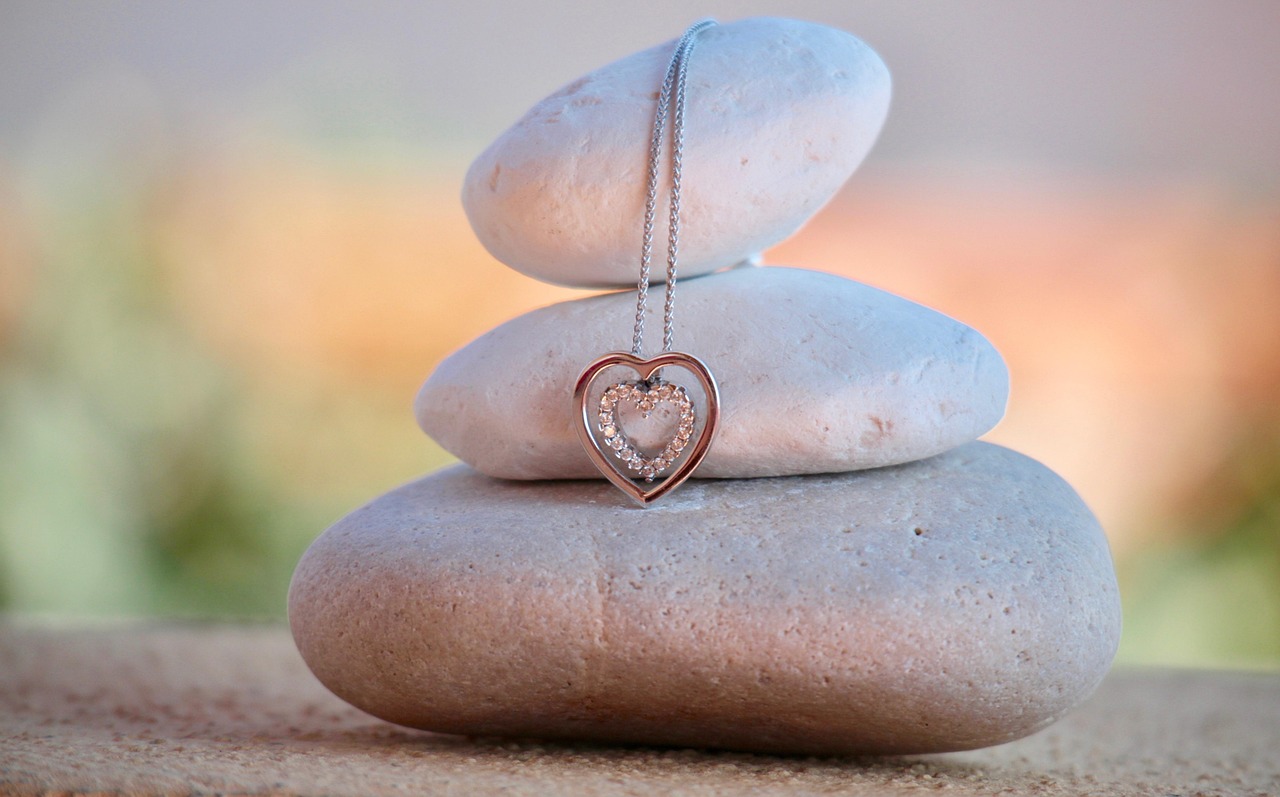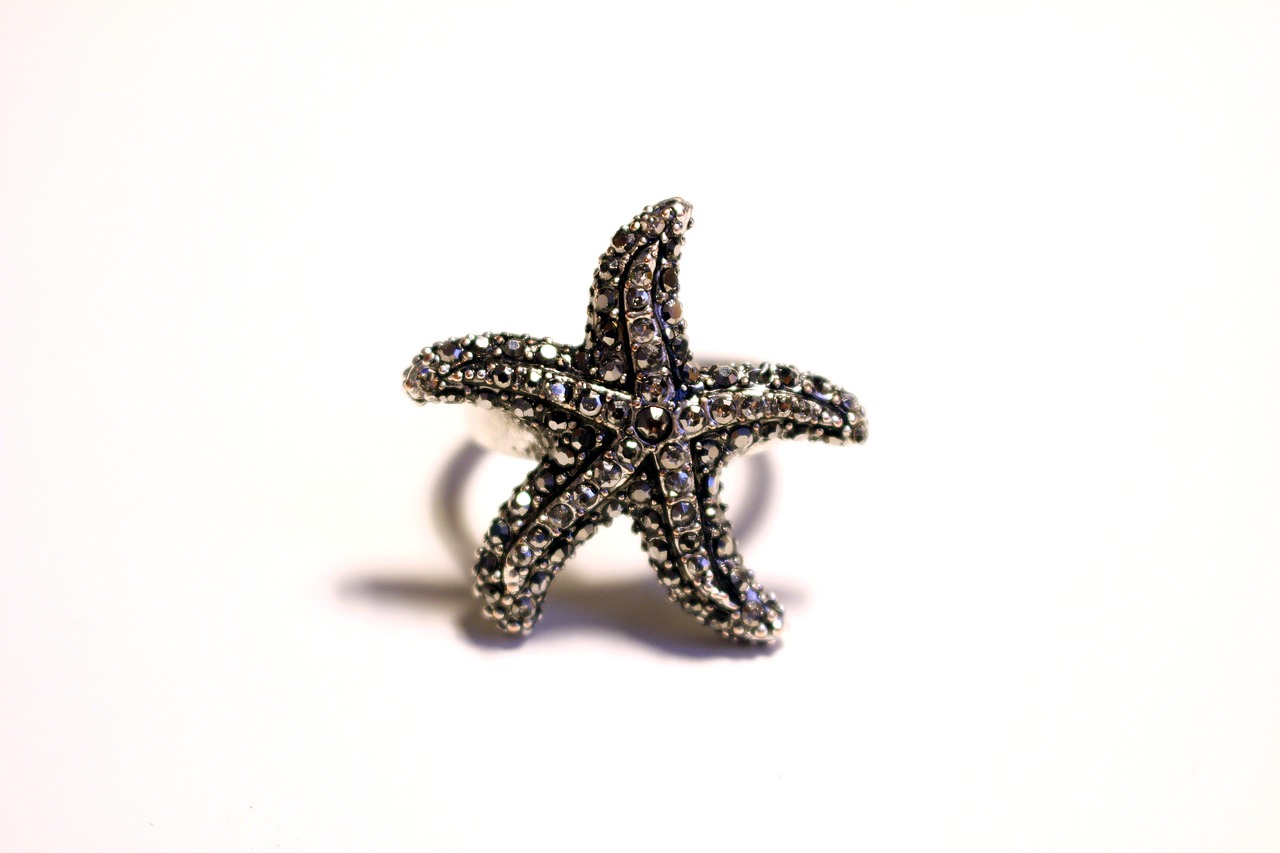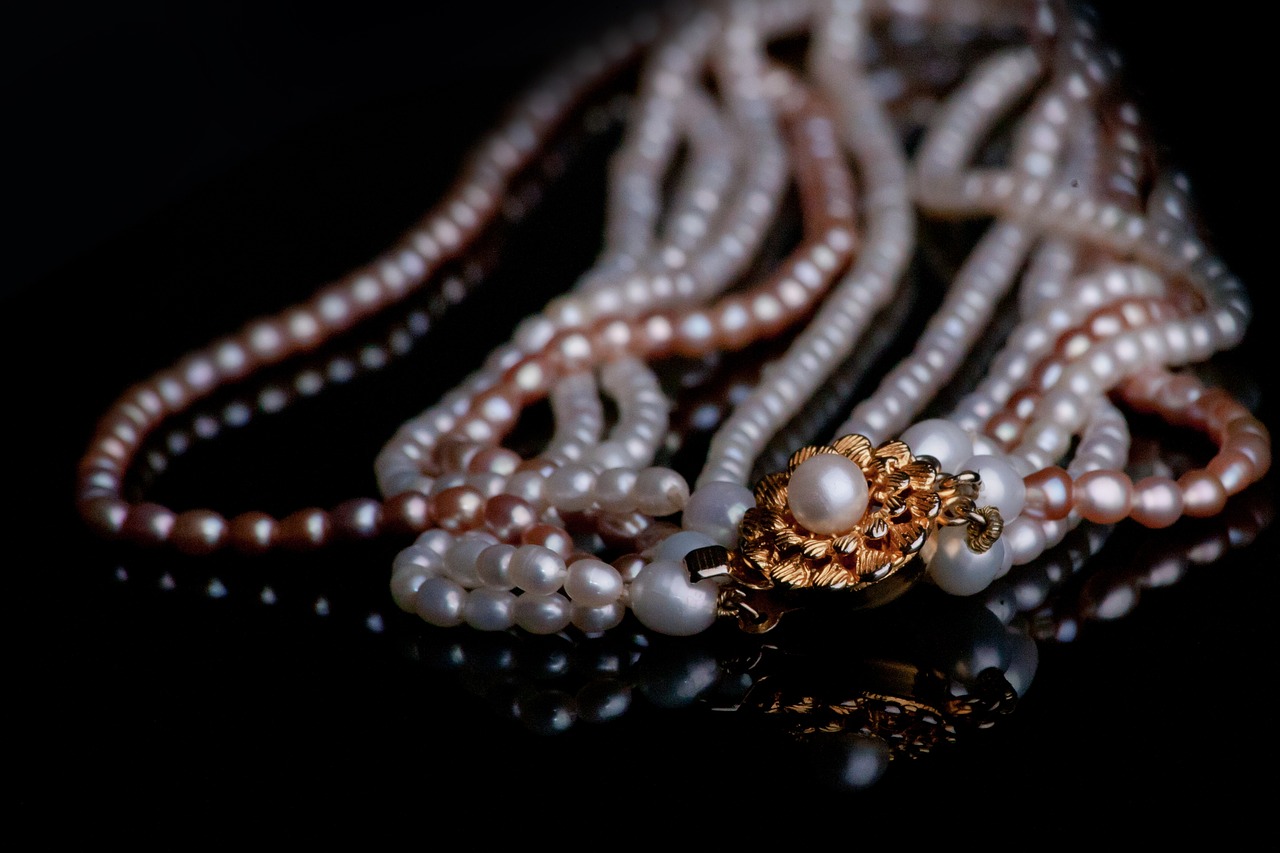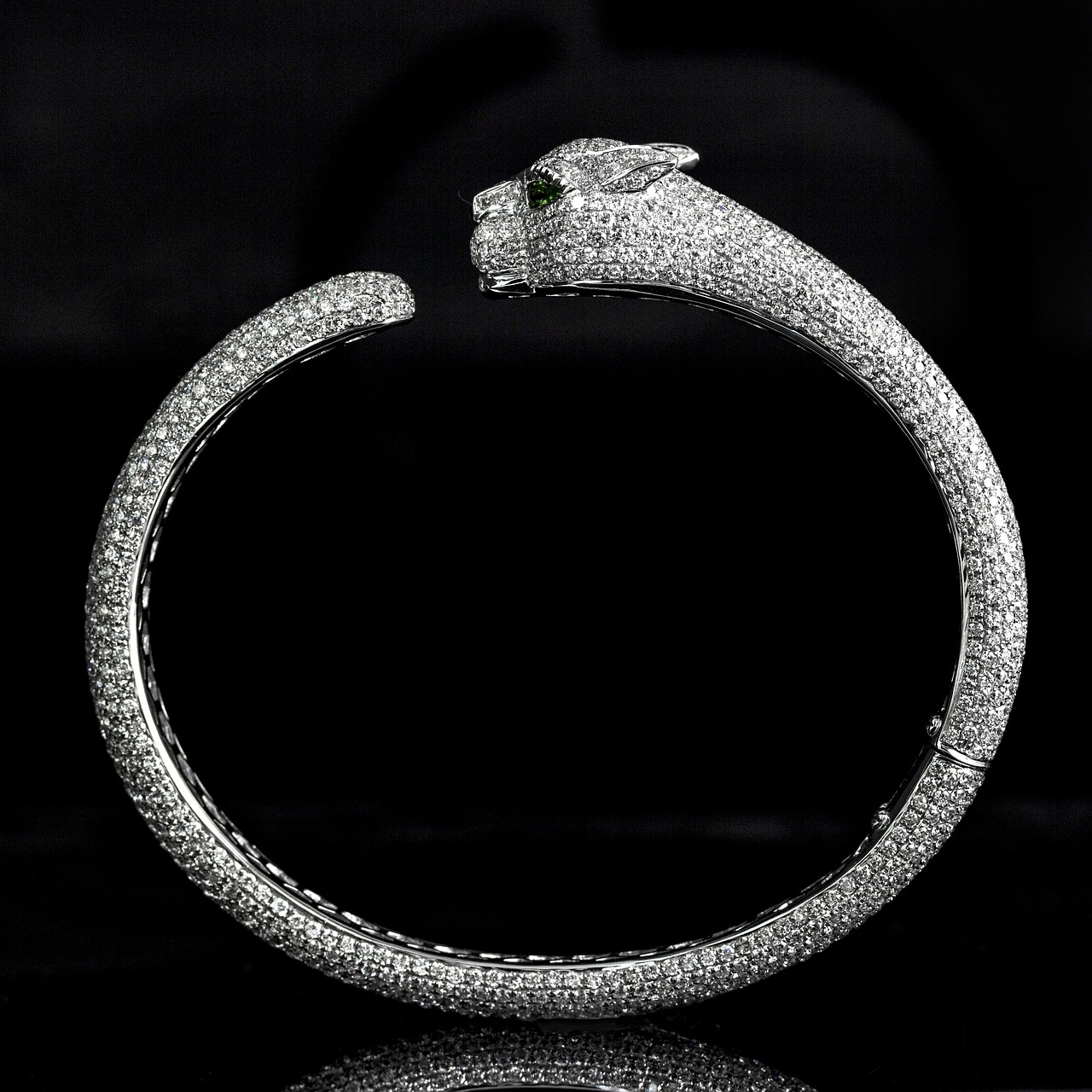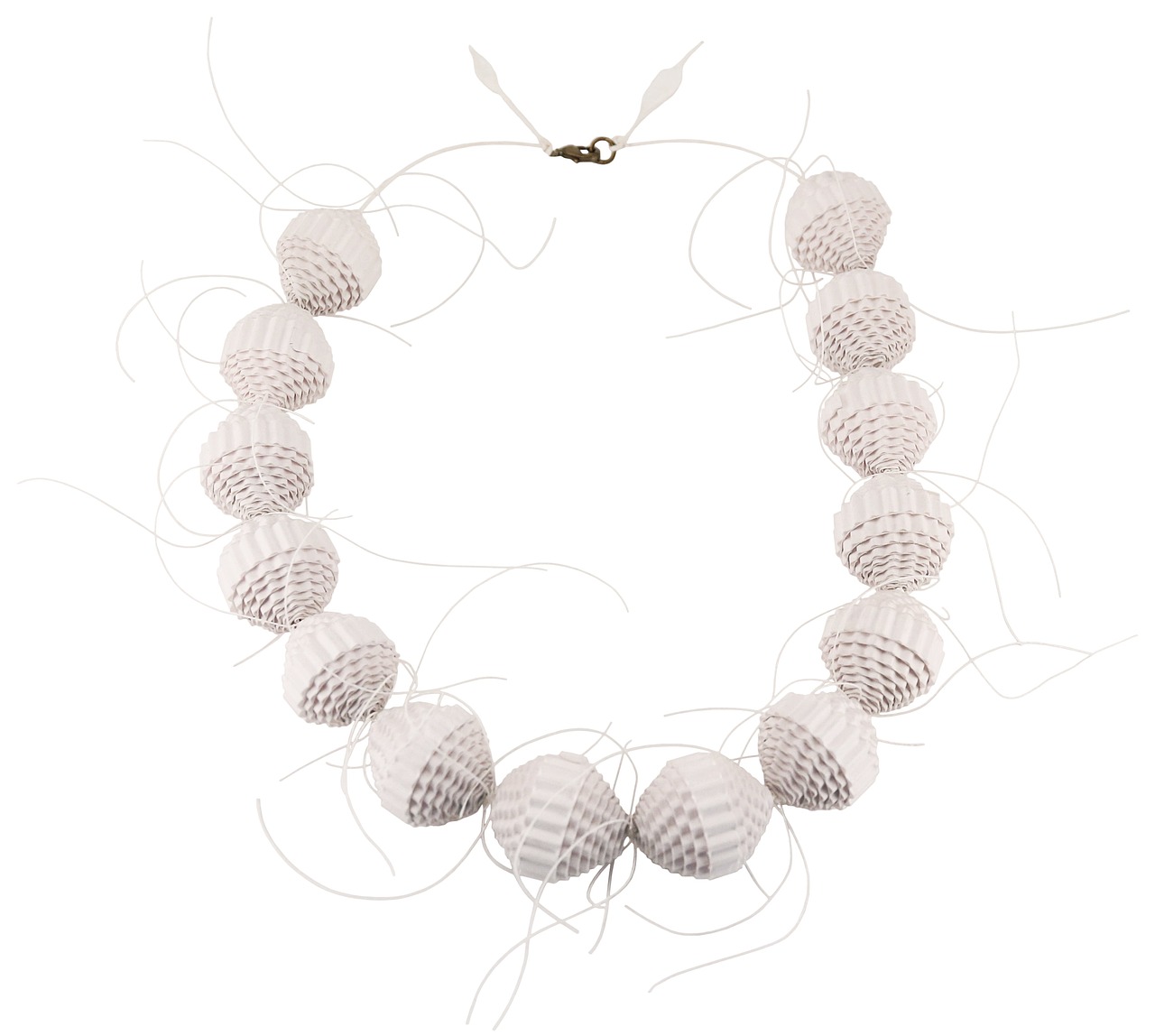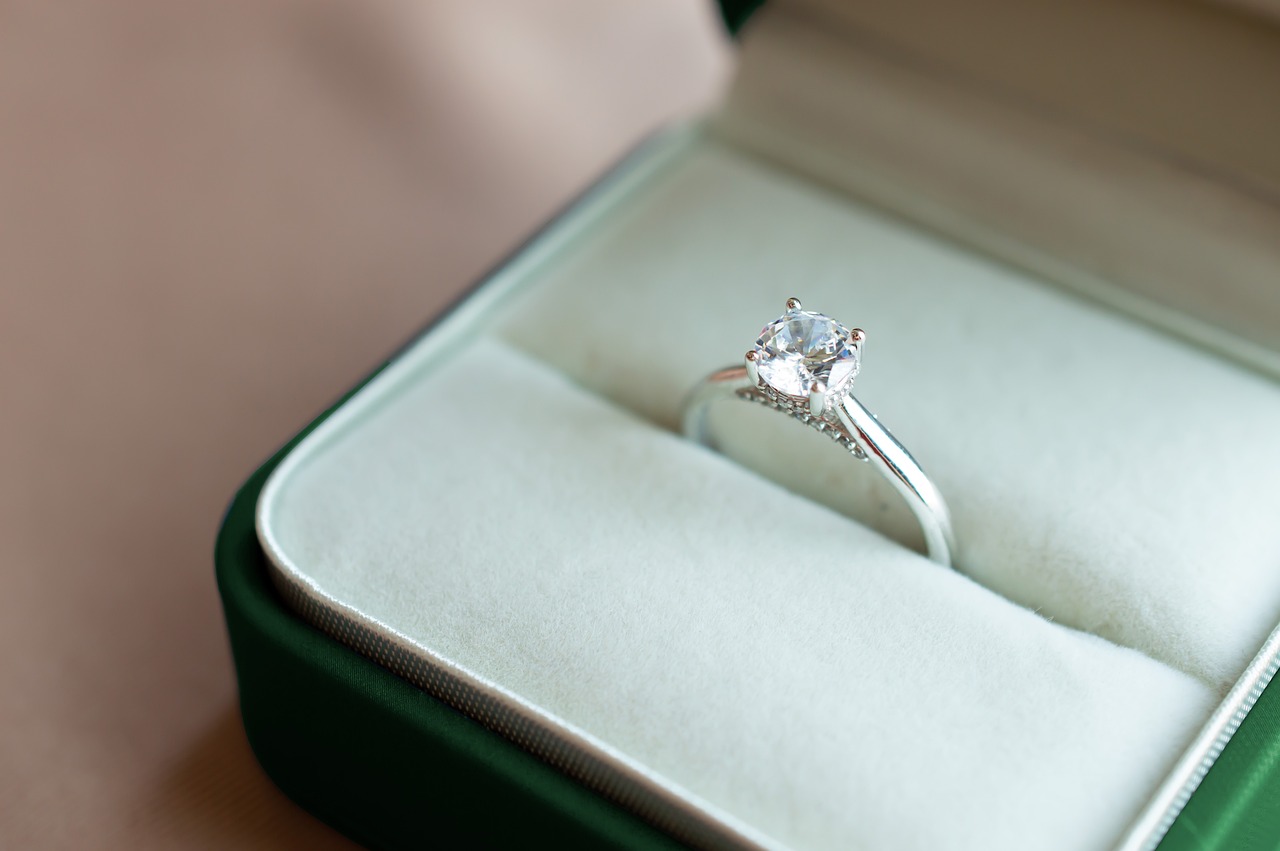Virtual Jewelry Design is revolutionizing the way customers perceive and purchase jewelry. By leveraging cutting-edge technology, buyers can now visualize their unique pieces in a virtual environment before making a commitment. This innovative approach not only enhances the shopping experience but also ensures that customers are satisfied with their choices.
Virtual jewelry design encompasses the use of advanced technology to create and visualize custom jewelry pieces. This allows customers to interact with their designs in a 3D space, enabling them to see every detail before finalizing their purchase.
The process typically involves sophisticated software and 3D modeling techniques. Customers can customize various aspects of their jewelry, such as:
- Metal type
- Stone selection
- Design elements
This level of customization ensures that each piece is tailored to the buyer’s preferences.
3D modeling plays a crucial role in virtual jewelry design. It allows designers to create intricate representations of pieces that customers can manipulate. This feature enables buyers to explore different options and styles, providing a more interactive experience.
Utilizing 3D modeling offers several advantages, including:
- Accuracy in design: Customers can see a precise representation of their jewelry.
- Complex details: Visualizing intricate details becomes easier.
- Informed decisions: Customers can make adjustments before production, ensuring satisfaction.
One of the key features of virtual jewelry design is the ability to personalize pieces. Customers can choose from a variety of options to create their unique jewelry:
- Gemstones
- Metals
- Engravings
This ensures that every piece is not only unique but also a true reflection of the customer’s personal style.
Opting for virtual jewelry design comes with numerous benefits, including:
- Enhanced visualization: Customers can see their designs from multiple angles.
- Easy modifications: Changes can be made effortlessly during the design process.
- Engaging experience: The interactive nature of virtual design tools fosters greater customer involvement.
Virtual jewelry design can be more cost-effective than traditional methods. By reducing material waste and enabling precise adjustments, customers can save money while still achieving their desired results.
Despite its many advantages, virtual jewelry design does have limitations. For instance, it cannot fully replicate the tactile experience of trying on physical jewelry.
Even with technological advancements, virtual representations may not accurately capture the true color, texture, or weight of materials. This discrepancy can affect customer satisfaction.
Some users may face technical difficulties or lack access to the necessary technology, which can hinder their ability to utilize virtual jewelry design effectively.
Getting started with virtual jewelry design is simple. Customers can find both online platforms and local jewelers that offer this innovative service, often with user-friendly interfaces.
It’s essential to research and select a reputable platform to ensure a positive experience. Options range from established jewelers to specialized online design services.
When embarking on your custom jewelry design journey, consider the following:
- Personal style: Reflect your individuality in the design.
- Occasion: Tailor the piece to a specific event or purpose.
- Budget: Keep financial constraints in mind while designing.
By considering these factors, you can create a piece that truly resonates with your personal aesthetic.
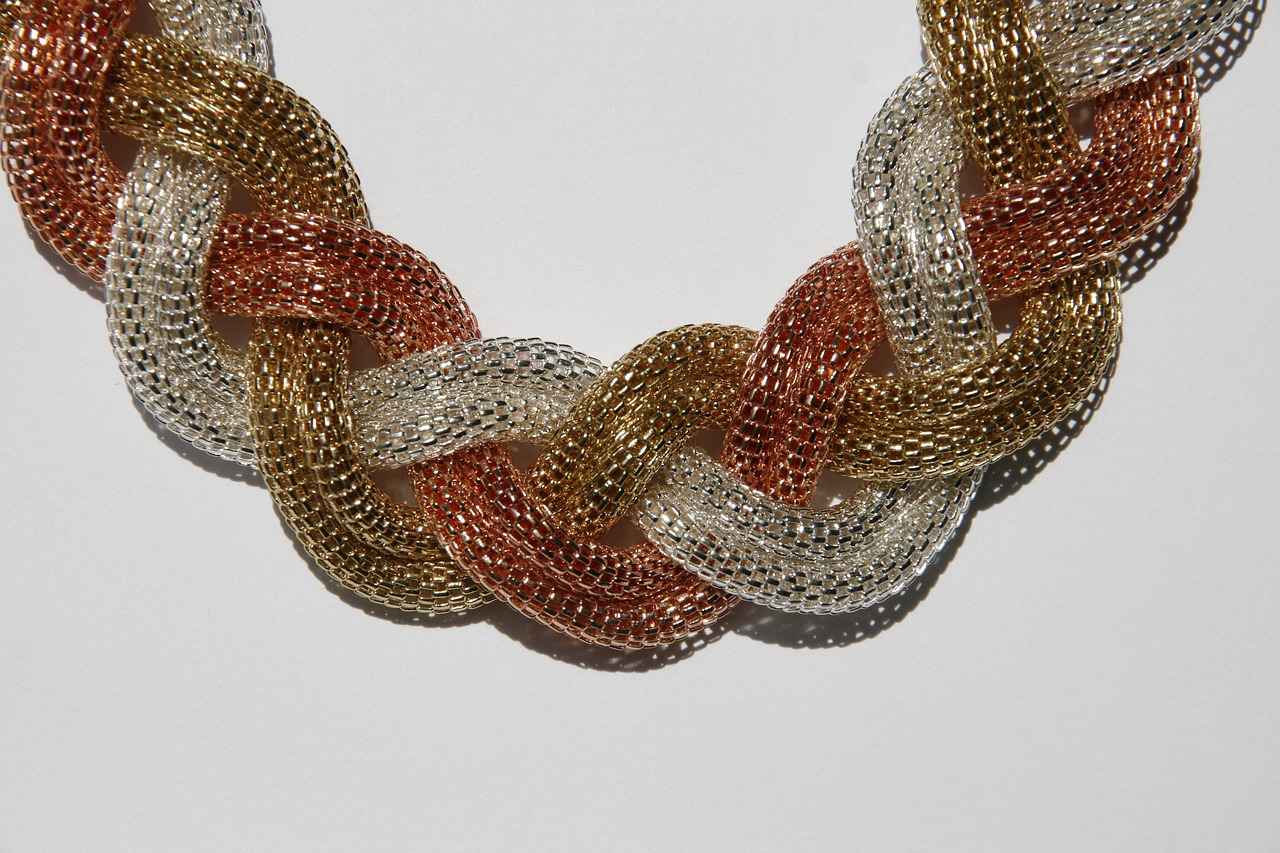
What is Virtual Jewelry Design?
Virtual jewelry design is transforming the way consumers approach custom jewelry creation. By leveraging advanced technology, customers can now visualize their unique jewelry pieces in a 3D format before making a purchase. This innovative approach not only enhances the shopping experience but also ensures that customers are completely satisfied with their designs.
At its core, virtual jewelry design refers to the integration of technology in the jewelry-making process. This method allows individuals to create and visualize custom jewelry pieces through sophisticated software and 3D modeling techniques. Customers can explore various design options, including metal types, gemstone selections, and intricate design elements, all from the comfort of their own homes.
The process begins with users accessing a virtual design platform where they can start crafting their jewelry. Using advanced software, customers can manipulate their designs, adjusting parameters such as size, shape, and color. This interactive experience empowers users to experiment with different combinations until they find the perfect match for their style and preferences.
3D modeling plays a pivotal role in virtual jewelry design. This technology allows designers to create highly detailed representations of jewelry pieces, enabling customers to view their creations from multiple angles. With the ability to rotate and zoom in on their designs, customers gain a deeper understanding of how their finished piece will look.
- Enhanced Accuracy: 3D models provide precise measurements and proportions, ensuring that the final product matches the customer’s expectations.
- Visualization of Complex Details: Customers can see intricate details that might be overlooked in traditional sketches, helping them make informed decisions.
- Customization Freedom: Users can easily alter designs, allowing for a truly personalized piece of jewelry.
There are several software options available for virtual jewelry design, each offering unique features:
- RhinoGold: Known for its flexibility and extensive toolset.
- MatrixGold: Offers advanced features for professional jewelers.
- Tinkercad: A user-friendly platform ideal for beginners.
One of the most appealing aspects of virtual jewelry design is the extensive customization options available. Customers can choose from a wide range of features, including:
- Gemstones: Select from various stones, each with unique properties and colors.
- Metals: Choose from gold, silver, platinum, and more.
- Engravings: Personalize the piece with names, dates, or special messages.
Opting for virtual jewelry design offers numerous benefits:
- Enhanced Visualization: Customers can see a realistic representation of their designs before committing to a purchase.
- Easy Modifications: Changes can be made quickly and effortlessly, ensuring the final product meets the customer’s vision.
- Engaging Experience: The interactive nature of virtual design fosters a deeper connection between the customer and their jewelry.
While virtual jewelry design boasts many advantages, it is essential to acknowledge its limitations. For instance, the tactile experience of physically trying on jewelry cannot be replicated virtually. Additionally, despite advancements in technology, virtual representations may fall short in capturing the true color, texture, and weight of materials.
Getting started with virtual jewelry design is straightforward. Customers can explore online platforms or local jewelers that offer this service. It is crucial to select a reputable platform to ensure a positive experience. When designing a custom piece, consider personal style, occasion, and budget to create a piece that truly reflects individuality.
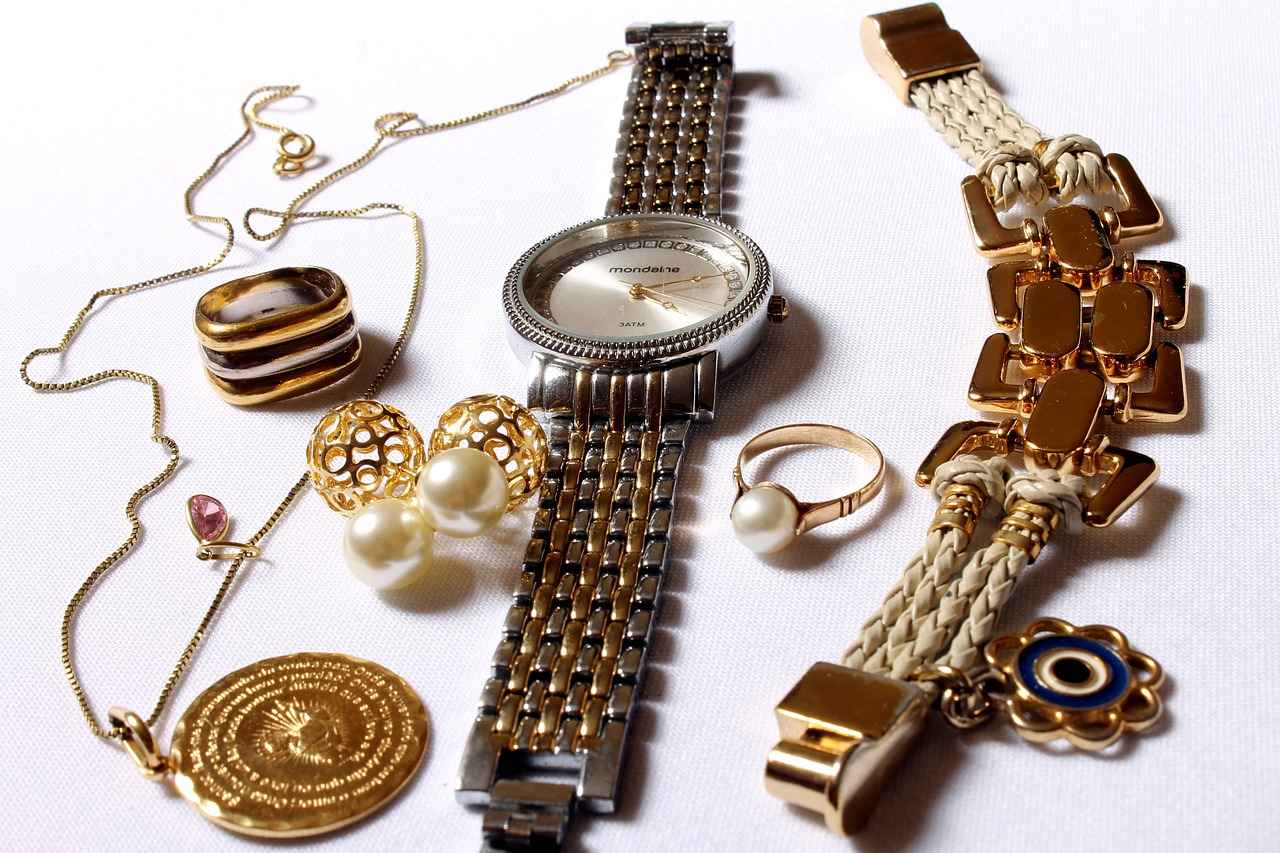
How Does Virtual Jewelry Design Work?
In the realm of jewelry design, the advent of technology has revolutionized the way customers engage with custom pieces. Virtual jewelry design stands at the forefront of this transformation, allowing individuals to visualize and personalize their jewelry before making a purchase. This process is not only innovative but also enhances the overall buying experience, ensuring that customers are satisfied with their unique creations.
The process of virtual jewelry design is intricate and involves a combination of advanced software and 3D modeling techniques. These technologies empower customers to customize various aspects of their jewelry, including:
- Metal Type: Customers can choose from a range of metals such as gold, silver, platinum, and more, each offering different aesthetic and durability properties.
- Stone Selection: Whether it’s diamonds, sapphires, or custom gemstones, users can pick the stones that best resonate with their personal style.
- Design Elements: From intricate engravings to unique shapes, the design elements can be tailored to reflect individual tastes.
Once the customer selects their preferences, the software generates a 3D model of the jewelry piece. This model can be rotated and viewed from various angles, allowing customers to appreciate the design from all perspectives. The ability to manipulate the design in real-time fosters a more engaging experience, as customers can make adjustments on the fly.
3D modeling plays a pivotal role in the virtual jewelry design process. It allows designers to create highly detailed representations of their pieces, ensuring that every intricate detail is accurately depicted. This technology not only enhances the visualization process but also allows for:
- Precision: The accuracy of 3D modeling ensures that the final product closely matches the virtual design, reducing discrepancies between expectation and reality.
- Complexity: Designers can visualize complex details that may be difficult to convey through traditional sketches, making it easier to communicate ideas.
- Customer Feedback: The interactive nature of 3D models allows for immediate feedback from customers, facilitating a collaborative design process.
Choosing virtual jewelry design comes with a multitude of benefits, including:
- Enhanced Visualization: Customers can see their designs come to life, making it easier to make informed decisions.
- Easy Modifications: Changes can be made swiftly, allowing customers to experiment with different styles without the commitment of physical materials.
- Cost-Effectiveness: Virtual design minimizes material waste, and the ability to visualize designs before production can lead to more efficient use of resources.
The customization options available in virtual jewelry design are virtually limitless. Customers can:
- Select the size and shape of gemstones
- Opt for different finishes and textures on the metal
- Incorporate personal engravings or messages to add a sentimental touch
This level of personalization ensures that each piece of jewelry is not only unique but also a true reflection of the customer’s style and preferences. As a result, virtual jewelry design has become an appealing choice for those looking to create meaningful and personalized gifts.
The Role of 3D Modeling in Jewelry Design
is a pivotal aspect of the modern jewelry-making process. This innovative technology not only enhances creativity but also significantly improves the customer experience. With 3D modeling, designers can create intricate and detailed representations of jewelry pieces, allowing for a level of personalization that was previously unimaginable.
3D modeling in jewelry design involves the use of sophisticated software to create three-dimensional representations of jewelry pieces. This technology allows designers to visualize their creations from various angles, ensuring that every detail is perfectly captured. Customers can interact with these models, rotating and zooming in to examine the piece closely, which enhances their understanding and appreciation of the design.
For jewelry designers, 3D modeling offers several advantages:
- Precision: Designers can achieve a high level of accuracy in their creations, ensuring that every measurement is exact and that the final product meets the client’s expectations.
- Efficiency: The ability to quickly make adjustments to designs saves time and resources, allowing for faster turnaround times.
- Visual Appeal: Stunning visualizations can be created, which are essential for marketing and showcasing designs to potential customers.
Customers benefit immensely from the integration of 3D modeling in jewelry design:
- Customization: Clients can personalize their pieces by selecting materials, shapes, and sizes, making each item unique to their preferences.
- Visualization: The ability to see a realistic representation of their jewelry before it is made helps customers make informed decisions, reducing the likelihood of dissatisfaction.
- Engagement: Interactive features allow customers to engage with their designs, increasing their emotional investment in the piece.
Several software programs cater specifically to jewelry design, each offering unique features:
- RhinoGold: Known for its versatility, RhinoGold is widely used in the industry for creating intricate designs.
- MatrixGold: This software combines CAD capabilities with powerful rendering options, making it a favorite among professional jewelers.
- Tinkercad: While more basic, Tinkercad is user-friendly and great for beginners looking to dip their toes into jewelry design.
Despite its many benefits, 3D modeling does come with challenges:
- Technical Skills: Designers must possess a certain level of technical skill to effectively use 3D modeling software.
- Cost: High-quality software can be expensive, posing a barrier for some designers.
- Realism: While 3D models are detailed, they may not fully replicate the tactile experience of wearing jewelry, which can affect customer satisfaction.
The future of 3D modeling in jewelry design looks promising, with advancements in technology paving the way for even more innovative solutions:
- Augmented Reality (AR): Integrating AR will allow customers to visualize how the jewelry looks on them in real-time.
- AI Integration: Artificial intelligence could streamline the design process, offering suggestions based on customer preferences.
- Sustainability: 3D modeling can contribute to sustainable practices by minimizing waste during the design process.
In summary, the role of 3D modeling in jewelry design is transformative, providing designers and customers with tools to create and visualize unique pieces. As technology continues to evolve, we can expect even greater advancements that will enhance the jewelry buying experience.
Benefits of 3D Modeling
In the realm of jewelry design, 3D modeling has revolutionized the way custom pieces are conceptualized and created. This innovative technology not only enhances the design process but also significantly improves customer satisfaction by providing a visual representation of the final product before it is manufactured. Below, we explore the in jewelry design.
- Precision and Accuracy: One of the most significant benefits of 3D modeling is the accuracy it offers. Designers can create intricate details that are often challenging to achieve through traditional methods. This precision ensures that every aspect of the design aligns with the customer’s vision.
- Enhanced Visualization: Customers can visualize complex designs in a realistic 3D format. This capability allows them to see how different elements, such as gemstones and metal types, interact with one another, leading to more informed decisions.
- Customization Flexibility: With 3D modeling, customers have the opportunity to customize their jewelry pieces extensively. They can experiment with different styles, materials, and colors, making the design process more interactive and engaging.
- Reduced Production Errors: By visualizing the design in 3D, potential issues can be identified and corrected before production begins. This proactive approach minimizes costly mistakes and ensures that the final product meets the customer’s expectations.
- Time Efficiency: The 3D modeling process can significantly reduce the time taken to create prototypes. Designers can quickly make adjustments and provide clients with updated visuals, streamlining the overall design process.
3D modeling not only benefits the designers but also greatly enhances the overall customer experience. By providing a tangible representation of the jewelry piece, customers feel more confident in their purchase decisions. They can visualize their custom design in detail, which fosters a deeper emotional connection to the piece.
Yes, 3D modeling can be a cost-effective solution for both designers and customers. By reducing material waste and allowing for precise adjustments, it lowers the overall production costs. This efficiency can be reflected in the pricing of the final product, making custom jewelry more accessible to a broader audience.
Several advanced software options are available for 3D jewelry modeling, each catering to different design needs:
- RhinoGold: Known for its versatility, this software is widely used for creating detailed jewelry designs.
- MatrixGold: This software combines CAD capabilities with specific tools for jewelry design, making it a favorite among professionals.
- Tinkercad: A user-friendly option for beginners, Tinkercad allows users to create simple designs easily.
While 3D modeling offers numerous advantages, it does come with some limitations. For instance, it may not fully replicate the tactile experience of trying on physical jewelry. Additionally, some users may encounter technical challenges or lack access to the necessary technology, which can affect their ability to utilize these advanced design tools effectively.
In summary, the integration of 3D modeling in jewelry design provides substantial benefits, including enhanced accuracy, customization options, and improved customer engagement. As technology continues to evolve, the jewelry industry will likely see even more innovative applications of 3D modeling, further enriching the customer experience.
Popular 3D Modeling Software
In the realm of virtual jewelry design, the choice of software plays a crucial role in shaping the creative process. With numerous options available, designers and customers alike can find platforms that cater to their specific needs. Below, we explore some of the most popular 3D modeling software used in the industry, highlighting their unique features and applications.
RhinoGold is a widely recognized software in the jewelry design community, known for its precision and versatility. This powerful tool allows designers to create intricate 3D models with detailed specifications. Users can manipulate various design elements, including:
- Metal types such as gold, silver, and platinum
- Gemstone settings and custom shapes
- Engravings for personalization
RhinoGold’s intuitive interface makes it accessible for both beginners and experienced designers, enabling them to bring their creative visions to life with ease.
MatrixGold stands out as a premium choice for professional jewelers seeking advanced design capabilities. This software combines the robust features of RhinoGold with additional tools tailored for complex jewelry design. Key features include:
- Parametric design that allows for easy modifications
- Realistic rendering options to visualize the final product
- Extensive library of customizable design templates
MatrixGold is particularly beneficial for those looking to create high-end, bespoke jewelry pieces, as it provides the flexibility needed to experiment with various styles and techniques.
Tinkercad is an excellent option for those new to jewelry design or for hobbyists looking for a straightforward platform. This browser-based software is free to use and offers a user-friendly interface that encourages creativity. Key advantages include:
- Simple drag-and-drop functionality for easy design
- 3D printing capabilities for prototyping
- Community support and resources for learning
Tinkercad may not have the advanced features of RhinoGold or MatrixGold, but its simplicity makes it an ideal starting point for anyone interested in exploring virtual jewelry design.
In addition to the aforementioned software, several other tools are worth considering for virtual jewelry design:
- Blender: A free, open-source software known for its powerful modeling capabilities and extensive community support.
- Fusion 360: A cloud-based solution that combines CAD, CAM, and CAE tools, ideal for collaborative projects.
- SolidWorks: A professional-grade software used in various industries, including jewelry, for its advanced modeling features.
Each of these software options offers unique features and benefits, catering to different aspects of jewelry design. Whether you are a seasoned professional or a beginner, the right software can significantly enhance your design experience and allow you to visualize your custom pieces before making a purchase.
Customization Options in Virtual Jewelry Design
In the realm of virtual jewelry design, the ability to customize pieces has revolutionized how customers engage with jewelry. This innovative approach allows individuals to express their personal style and creativity through unique designs tailored to their preferences. But what exactly are the customization options available in this exciting world of jewelry?
Customers can explore a wide array of customization features, ensuring that each piece of jewelry is not only aesthetically pleasing but also deeply personal. Here are some key options:
- Gemstone Selection: Choose from a variety of gemstones, including diamonds, sapphires, emeralds, and more. Each stone comes with its own unique properties and color palettes, allowing customers to select the one that resonates most with their style.
- Metal Choices: Whether you prefer the classic elegance of gold, the modern appeal of platinum, or the rustic charm of silver, virtual design tools allow you to select the metal that best fits your vision.
- Engravings: Personal messages, dates, or symbols can be added to create a meaningful connection to the piece. This level of personalization transforms a standard item into a cherished keepsake.
- Design Elements: Customers can manipulate various design aspects, such as the shape and size of the jewelry, to create a look that is uniquely theirs.
The importance of customization in jewelry design cannot be overstated. Here are a few reasons why:
- Individuality: Custom pieces allow wearers to showcase their unique personality and style, making the jewelry more than just an accessory.
- Emotional Connection: Personalized jewelry often holds sentimental value, making it a perfect gift for loved ones or a meaningful treat for oneself.
- Enhanced Satisfaction: When customers have a hand in designing their jewelry, they are more likely to feel satisfied with their purchase, leading to a positive shopping experience.
The customization process in virtual jewelry design is user-friendly and intuitive. Here’s how it typically unfolds:
1. Select a base design: Begin with a template or create a piece from scratch.2. Customize features: Choose gemstones, metals, engravings, and design elements using the virtual tools provided.3. Visualize your design: Utilize 3D modeling to see a realistic representation of your customized piece.4. Make adjustments: Easily modify aspects of your design until it perfectly matches your vision.5. Finalize and order: Once satisfied, place your order for production.
Customization offers numerous benefits, including:
- Creative Freedom: Customers can let their imagination run wild, creating pieces that truly reflect their style.
- Quality Assurance: By visualizing the design beforehand, customers can ensure that the final product meets their expectations.
- Cost-Effective: Customization can often be done within budget, allowing for a personalized touch without overspending.
In conclusion, the customization options available in virtual jewelry design empower customers to create unique pieces that resonate with their personal style. By selecting gemstones, metals, and design elements, individuals can craft jewelry that is not only beautiful but also meaningful, ensuring that each piece tells a story.
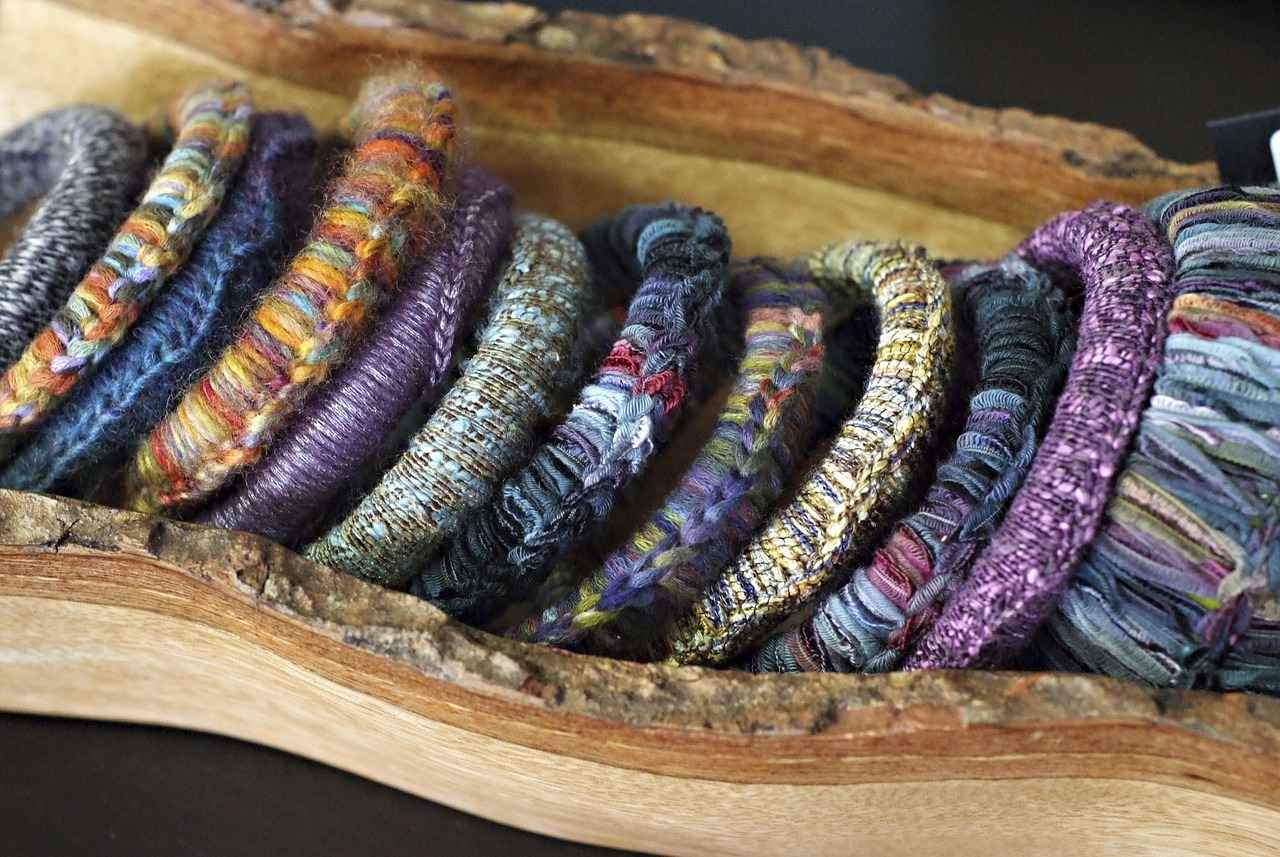
Why Choose Virtual Jewelry Design?
In today’s fast-paced world, the demand for personalized jewelry continues to rise. As a result, many consumers are turning to virtual jewelry design as a modern solution to create unique pieces that reflect their personal style. This innovative approach not only allows for customization but also enhances the overall shopping experience. Below, we explore the various reasons why choosing virtual jewelry design is a wise decision.
- Enhanced Visualization: One of the most significant advantages of virtual jewelry design is the ability to see a 3D representation of your custom piece before making a purchase. This technology allows customers to visualize their designs from multiple angles, ensuring that every detail meets their expectations.
- Easy Modifications: With traditional jewelry design, making changes can be a cumbersome process. However, virtual design platforms enable users to easily modify their creations. Whether it’s adjusting the size, changing the gemstone, or altering the design elements, customers can experiment with different options effortlessly.
- Engaging Shopping Experience: Virtual jewelry design promotes an interactive shopping experience. Customers can engage with their designs, leading to a more satisfying journey. This hands-on approach not only increases customer satisfaction but also fosters a deeper connection to the final product.
- Cost-Effective Solutions: In addition to enhancing the shopping experience, virtual jewelry design can be more economical than traditional methods. By reducing material waste and minimizing the need for physical prototypes, customers can save money while still achieving their desired look.
By allowing customers to visualize their designs, virtual jewelry design significantly enhances satisfaction levels. Customers can confirm that their custom piece aligns with their vision before final production. This proactive approach not only reduces the risk of disappointment but also builds trust between the customer and the jeweler.
Virtual jewelry design offers an extensive range of customization options. Customers can choose from various materials, including gold, silver, and platinum, and select from a wide array of gemstones. Additionally, options for engravings and unique design elements can be incorporated, making each piece truly one-of-a-kind.
When selecting a platform for virtual jewelry design, consider the following:
- User-Friendly Interface: Look for platforms that are intuitive and easy to navigate. A user-friendly interface allows for a smoother design experience.
- Reputation: Research the platform’s reputation by reading reviews and testimonials from previous customers. A reputable service provider will have positive feedback and showcase a portfolio of successful designs.
- Support Services: Ensure that the platform offers customer support to assist with any questions or concerns during the design process. A responsive customer service team can enhance your overall experience.
Getting started with virtual jewelry design is straightforward. Begin by exploring various online platforms or visiting local jewelers that offer this innovative service. Most platforms provide tutorials and guides to help you navigate the design process, making it accessible for everyone, regardless of experience.
In conclusion, opting for virtual jewelry design not only enhances the visualization and customization of your jewelry but also provides an engaging and cost-effective shopping experience. With the ability to see your designs in 3D and make modifications easily, the process is both enjoyable and satisfying. Whether you’re designing a piece for yourself or a loved one, virtual jewelry design is a modern solution that caters to your unique style and preferences.
Enhancing Customer Engagement
In today’s digital age, enhancing customer engagement has become a pivotal focus for businesses, especially in the jewelry industry. Virtual design tools have emerged as a game-changer, allowing customers to immerse themselves in the design process of their jewelry. This innovative approach not only fosters creativity but also transforms the purchasing experience into an interactive journey.
Virtual design tools are advanced software applications that enable users to create and visualize custom jewelry pieces in a 3D environment. These tools allow customers to manipulate various aspects of their designs, such as metal types, gemstone selections, and intricate design elements, leading to a more personalized experience.
By providing an interactive platform, virtual design tools encourage customers to take an active role in the creation of their jewelry. This level of involvement leads to a deeper emotional connection with the product, enhancing the overall customer experience. Here are some specific ways these tools foster engagement:
- Real-Time Customization: Customers can see changes instantly, allowing them to experiment with different styles and materials without any commitment.
- Visualization of Final Products: The ability to view a realistic 3D model of their designed piece helps customers understand how their choices come together, making the purchasing decision easier.
- Interactive Feedback: Many platforms allow for sharing designs with friends or family, providing valuable feedback and making the process more social.
Customer engagement is crucial for building brand loyalty and trust. When customers feel connected to a product, they are more likely to complete their purchase and recommend the brand to others. Virtual design tools help create this connection by:
- Enhancing Satisfaction: When customers can visualize their designs, they are more likely to be satisfied with the final product.
- Reducing Returns: By allowing customers to see exactly what they are buying, virtual design tools minimize the chances of dissatisfaction and returns.
- Encouraging Repeat Business: A positive and engaging experience often leads to customers returning for future purchases.
The integration of virtual design tools in the jewelry industry offers numerous benefits:
- Cost-Effectiveness: These tools reduce the need for physical prototypes, saving both time and resources.
- Accessibility: Customers can access design tools from anywhere, making the process convenient and user-friendly.
- Innovation: Brands that adopt these technologies are often seen as forward-thinking, attracting a tech-savvy customer base.
When selecting a virtual design tool, consider factors such as user interface, available features, and customer support. Researching reviews and comparing different platforms can help you find the one that best suits your needs. Look for tools that offer:
- Intuitive Design Interfaces: A user-friendly interface can make the design process enjoyable.
- Comprehensive Customization Options: Ensure the tool allows for a wide range of design choices.
- Support Resources: Access to tutorials and customer support can enhance the user experience.
In conclusion, virtual design tools are revolutionizing customer engagement in the jewelry industry. By allowing users to interact with their designs, these tools not only enhance the purchasing journey but also ensure a higher level of satisfaction. As technology continues to advance, the potential for even greater customer engagement in jewelry design is limitless.
Cost-Effective Solutions
In the realm of jewelry design, cost-effectiveness is a crucial factor that can significantly influence purchasing decisions. With the advent of technology, virtual jewelry design has emerged as a game changer, allowing customers to create and visualize their custom pieces without the financial burden often associated with traditional methods.
One of the primary ways virtual jewelry design proves to be more economical is through the reduction of material waste. In traditional jewelry making, artisans often work with raw materials that can lead to excess waste during the crafting process. However, virtual design allows for precise adjustments to be made before any physical production begins, ensuring that only the necessary materials are used.
By utilizing 3D modeling software, designers can create accurate representations of jewelry pieces, which means that modifications can be made easily and without additional costs. This flexibility not only saves money but also provides customers with the opportunity to experiment with different styles, materials, and designs without the fear of incurring extra expenses.
Virtual jewelry design platforms often offer a wide range of customization options, allowing customers to select everything from the type of metal to the choice of gemstones. This level of personalization means that customers can create a piece that fits their budget perfectly, without compromising on quality or design. For instance, opting for a less expensive metal or choosing synthetic stones can significantly reduce costs while still achieving a stunning final product.
Traditional jewelry purchases often come with hidden fees, such as those associated with design consultations, material sourcing, and alterations. In contrast, virtual jewelry design platforms typically provide transparent pricing models that outline all costs upfront. This transparency helps customers make informed decisions and avoid unexpected charges, making the overall experience more satisfying.
Virtual jewelry design also opens the door to a wider market by allowing customers to connect with designers from around the world. This global access means that customers can find competitive prices and unique designs that may not be available locally. By comparing options from various designers, customers can make choices that best fit their financial constraints.
- Research and Compare: Take the time to explore different virtual design platforms, comparing prices and services to find the best fit for your budget.
- Utilize Promotions: Many online jewelry designers offer promotions or discounts for first-time users, which can lead to substantial savings.
- Engage with Designers: Don’t hesitate to communicate with designers about your budget. Many are willing to adjust designs to meet financial needs without sacrificing quality.
In conclusion, virtual jewelry design not only enhances the creative process but also provides a cost-effective solution for customers looking to invest in custom pieces. By minimizing waste, reducing production costs, and offering a plethora of customization options, this innovative approach allows individuals to create beautiful jewelry that aligns with their financial goals. Embracing this technology can lead to a fulfilling and financially savvy jewelry buying experience.

What Are the Limitations of Virtual Jewelry Design?
When exploring the innovative realm of virtual jewelry design, it is essential to recognize both its advantages and limitations. While this technology enables users to visualize custom pieces in a way that traditional methods cannot, it also presents certain challenges that can affect the overall experience.
Virtual jewelry design offers a unique approach to customizing jewelry, yet it has some inherent limitations that users should be aware of:
- Tactile Experience: One of the most significant drawbacks is the inability to replicate the tactile experience of trying on physical jewelry. Customers cannot feel the weight or texture of the materials, which can lead to uncertainty about how the piece will truly feel when worn.
- Visual Accuracy: Despite advancements in 3D rendering technology, virtual representations may not accurately depict the true color, sparkle, or intricacies of gemstones and metals. This discrepancy can impact a customer’s ability to make informed decisions.
- Technical Challenges: Users may encounter technical issues such as slow loading times or software glitches, which can hinder the design process. Additionally, those without access to high-quality devices may struggle to utilize these platforms effectively.
- Limited Perspective: Virtual designs often provide a limited view of the jewelry, lacking the ability to see how the piece looks from various angles. This can be particularly important for intricate designs where details may be missed in a 2D or 3D model.
- Emotional Connection: Jewelry often carries deep emotional significance. The inability to physically interact with a piece may diminish the emotional connection that can be established through a traditional shopping experience.
The limitations of virtual jewelry design can significantly impact a customer’s purchasing decision. Customers may feel hesitant to commit to a piece without experiencing it physically. This uncertainty can lead to a reluctance to purchase, or worse, dissatisfaction if the final product does not meet expectations.
To mitigate these challenges, several solutions can be implemented:
- Augmented Reality (AR): Some platforms are beginning to integrate augmented reality features, allowing customers to visualize how a piece will look on them in real time. This can help bridge the gap between virtual and physical experiences.
- High-Quality Visuals: Utilizing high-resolution images and videos can enhance the visual experience, providing a more accurate representation of the jewelry.
- Physical Try-On Options: Offering the option for customers to order a sample or a less expensive version of the design can allow them to experience the piece physically before making a final decision.
- Customer Reviews and Feedback: Encouraging customers to leave reviews and share their experiences can provide valuable insights for new buyers, helping them feel more confident in their decisions.
In conclusion, while virtual jewelry design presents a myriad of opportunities for customization and visualization, it is crucial for customers to be aware of its limitations. By understanding these challenges and exploring available solutions, customers can enhance their purchasing experience and make informed decisions that align with their personal style and preferences.
Challenges in Virtual Visualization
In the realm of virtual jewelry design, the ability to visualize custom pieces has revolutionized the shopping experience. However, this innovative technology is not without its challenges, particularly in the area of virtual visualization. While it offers numerous advantages, certain limitations can impact customer satisfaction.
- Inaccurate Color Representation: One of the primary challenges in virtual jewelry design is the inability to accurately represent colors. Digital screens can vary significantly in color calibration, leading to discrepancies between what customers see online and the actual product.
- Texture and Finish Limitations: Virtual models often struggle to convey the texture and finish of materials. For instance, a polished gold ring may appear different in a 3D model compared to its real-world counterpart, affecting the perceived quality.
- Weight Perception: Weight plays a crucial role in how jewelry feels when worn. Virtual designs cannot replicate the physical weight of a piece, which can lead to dissatisfaction when customers receive their orders.
- Lack of Tactile Experience: The tactile experience of trying on jewelry is a significant aspect of the buying process. Virtual representations fail to provide this sensory feedback, which can deter customers from making a purchase.
When customers engage with virtual jewelry design, their expectations are often high. However, when the visualization does not match reality, it can lead to disappointment. For instance, if a customer orders a ring that appears vibrant blue on their screen but arrives in a dull shade, their trust in the brand may diminish. This disconnect can result in increased return rates and negative reviews, which can affect a jeweler’s reputation.
To enhance the virtual jewelry design experience, several strategies can be implemented:
- High-Quality Imaging: Utilizing advanced imaging technology can improve color accuracy and texture representation. High-definition images and videos can provide a more realistic view of the jewelry.
- Augmented Reality (AR) Integration: Incorporating AR technology allows customers to see how a piece looks on them in real-time, bridging the gap between virtual and physical experiences.
- Customer Education: Educating customers about the limitations of virtual design can set realistic expectations. Clear communication regarding color variations and material properties can reduce dissatisfaction.
- Enhanced Return Policies: Offering flexible return policies can alleviate customer concerns, encouraging them to make purchases despite the inherent limitations of virtual visualization.
The future of virtual jewelry design looks promising, with continuous advancements in technology. Innovations such as machine learning and AI-driven design tools are expected to enhance the realism of virtual representations. As these technologies evolve, they may address current challenges, leading to improved customer satisfaction.
In conclusion, while virtual jewelry design presents unique challenges in visualization, understanding these limitations and implementing effective strategies can significantly enhance the customer experience. By prioritizing accurate representation and customer engagement, jewelers can leverage technology to create a more satisfying shopping journey.
Technical Issues and Accessibility
In the rapidly evolving world of virtual jewelry design, the ability to create and visualize custom pieces has transformed the jewelry shopping experience. However, there are significant challenges that some users face, particularly regarding technical issues and accessibility. Understanding these challenges can help both consumers and designers navigate the virtual landscape more effectively.
While the technology behind virtual jewelry design is impressive, it is not without its faults. Users may encounter various technical issues that can impede their experience:
- Software Compatibility: Many design platforms require specific software or hardware configurations that may not be readily available to all users.
- Internet Connectivity: A stable internet connection is essential for smooth operation; slow or unreliable connections can lead to frustrating delays.
- Device Limitations: Some users may find that their devices do not support the advanced graphics or processing power needed for high-quality 3D modeling.
Accessibility is another critical factor in the effectiveness of virtual jewelry design. Not all users have equal access to the necessary technology or resources:
- Lack of High-End Devices: Users without access to powerful computers or tablets may struggle to utilize advanced design features.
- Digital Literacy: Some individuals may not be familiar with using design software, which can create a barrier to entry.
- Economic Factors: The cost of high-quality devices and software can be prohibitive for some potential customers, limiting their ability to engage with virtual design tools.
To mitigate the impact of technical issues and accessibility concerns, several solutions can be implemented:
- Platform Optimization: Developers can work on optimizing their platforms to ensure they run smoothly on a wider range of devices.
- User Education: Offering tutorials and resources can help users become more familiar with the technology, enhancing their overall experience.
- Accessibility Features: Implementing features that cater to users with different needs can make virtual jewelry design more inclusive.
Addressing technical issues and accessibility is vital for several reasons:
- Customer Satisfaction: Ensuring that all users can effectively engage with virtual design tools leads to higher satisfaction rates.
- Broader Market Reach: By making platforms more accessible, businesses can attract a wider audience, including those who may have previously been excluded.
- Innovation and Growth: Overcoming these challenges can drive innovation in the industry, leading to better products and services.
In conclusion, while virtual jewelry design offers exciting possibilities, it is crucial for the industry to recognize and address the technical issues and accessibility challenges that some users face. By doing so, businesses can enhance user experiences and ensure that everyone has the opportunity to create and enjoy beautiful custom jewelry.

How to Get Started with Virtual Jewelry Design?
Embarking on the journey of virtual jewelry design is a seamless experience for anyone looking to create a unique piece of jewelry. The evolution of technology has made it possible for customers to visualize their custom designs in real-time, ensuring they are satisfied with their choices before making a purchase. With numerous platforms available, both online and through local jewelers, the options are plentiful and user-friendly.
To get started with virtual jewelry design, customers can follow a few straightforward steps:
- Research Available Platforms: Begin by exploring various online platforms and local jewelers that specialize in virtual jewelry design. Look for reviews and testimonials to gauge user satisfaction.
- Choose User-Friendly Interfaces: Opt for platforms that offer intuitive design tools. A user-friendly interface enhances the design experience, allowing you to focus on creativity rather than navigating complex software.
- Create an Account: Most platforms will require you to create an account. This process is typically simple and involves providing basic information.
- Explore Customization Options: Once logged in, familiarize yourself with the customization options available. This may include selecting different metals, gemstones, and design elements.
- Utilize Design Tools: Use the platform’s design tools to create your piece. Many platforms offer 3D modeling features that allow you to rotate and view your design from different angles.
When diving into virtual jewelry design, it’s essential to consider several factors:
- Personal Style: Reflect on your personal style and preferences. Are you drawn to classic designs, or do you prefer modern aesthetics? Your jewelry should be a reflection of who you are.
- Occasion: Consider the occasion for which you are designing the jewelry. Is it for a wedding, anniversary, or a casual outing? This can influence your design choices.
- Budget: Set a budget for your design. Virtual jewelry design can be cost-effective, but it’s important to know your limits to avoid overspending.
To maximize your experience, keep the following tips in mind:
- Engage with the Platform’s Community: Many platforms have forums or community sections where users share their designs and experiences. Engaging with others can provide inspiration and tips.
- Take Advantage of Tutorials: Look for tutorials or guides offered by the platform. These resources can help you navigate the design tools effectively.
- Request Feedback: Don’t hesitate to seek feedback from friends or family on your design. Fresh perspectives can help refine your ideas.
Choosing to design your jewelry virtually comes with numerous advantages:
- Visualization: The ability to see a 3D model of your design helps you visualize the final product, reducing the chances of disappointment.
- Flexibility: You can easily make changes to your design until you are completely satisfied, which is often not possible with traditional methods.
- Cost-Effectiveness: Virtual design often reduces material waste and allows for precise adjustments, making it a more economical choice.
In conclusion, getting started with virtual jewelry design is an exciting opportunity to create personalized pieces that reflect your style and preferences. By following the outlined steps and considering key factors, you can enjoy a fulfilling design experience that culminates in a beautiful, custom-made jewelry piece.
Finding the Right Platform
When it comes to designing custom jewelry, selecting the right platform is crucial for ensuring a fulfilling experience. With a myriad of options available, from established jewelers to specialized online design services, it’s important to conduct thorough research before making your choice.
Choosing a reputable platform can significantly impact your overall satisfaction. A reliable platform not only provides quality designs but also ensures that you receive excellent customer service. This is especially important when dealing with custom pieces, where personal preferences and details play a vital role.
- Reputation: Look for platforms with positive reviews and testimonials from previous customers. This can provide insight into their reliability and quality of service.
- Customization Options: Ensure that the platform offers a wide range of customization features, such as the ability to choose different metals, stones, and design elements.
- Technology: The best platforms utilize advanced technology for 3D modeling, allowing you to visualize your design as accurately as possible before purchasing.
- Support: Check if the platform offers support during the design process. This can include live chat, email assistance, or phone support to answer any questions you may have.
Start by searching online for reviews and comparisons of different jewelry design platforms. Websites like Trustpilot or Google Reviews can provide valuable insights from real customers. Additionally, consider visiting social media pages of these platforms to see customer interactions and feedback.
Established jewelers often have a long-standing reputation and experience in the industry. They may offer:
- Quality Assurance: Well-known jewelers typically have stringent quality control measures in place.
- Expert Guidance: Their staff is often knowledgeable and can provide valuable advice during the design process.
- Trustworthiness: A reputable jeweler is likely to have a history of satisfied customers, which can give you peace of mind.
Specialized online design services can be a great option for those looking for unique designs. These platforms often have:
- Innovative Tools: Many online services provide user-friendly interfaces and advanced design tools that allow for greater customization.
- Competitive Pricing: Online platforms often have lower overhead costs, which can translate to more affordable pricing for custom pieces.
- Convenience: You can design your jewelry from the comfort of your home at any time that suits you.
- Neglecting Research: Avoid platforms with little to no online presence or customer feedback.
- Ignoring Customer Service: A lack of support can lead to frustration during the design process.
- Overlooking Return Policies: Ensure that the platform has clear return and refund policies in case the final product doesn’t meet your expectations.
In conclusion, taking the time to research and select the right platform for your custom jewelry design can make all the difference in your overall experience. By considering factors such as reputation, customization options, and customer support, you can ensure that your journey into the world of virtual jewelry design is both enjoyable and rewarding.
Tips for Designing Your Custom Piece
Designing custom jewelry is an exciting journey that allows you to create a piece that is uniquely yours. When embarking on this creative endeavor, there are several essential factors to consider to ensure that your final design truly reflects your personal style, suits the occasion, and aligns with your budget.
Understanding your personal style is crucial in the design process. Ask yourself:
- What types of jewelry do I wear most often?
- Do I prefer classic, modern, or eclectic designs?
- What colors and materials resonate with me?
By answering these questions, you can choose design elements that speak to your aesthetic preferences. For example, if you love vintage styles, consider incorporating intricate details or using antique finishes.
Different occasions call for different styles of jewelry. Whether it’s for a wedding, anniversary, or a casual outing, the purpose of the piece will influence its design. Here are some tips:
- Weddings: Opt for elegant designs that may include pearls or diamonds.
- Anniversaries: Consider personalized engravings or birthstones to add a sentimental touch.
- Everyday Wear: Prioritize comfort and simplicity, selecting durable materials.
By aligning your design with the occasion, you ensure that your custom jewelry is not only beautiful but also meaningful.
Establishing a budget is a critical step in the design process. Consider the following:
- Materials: Precious metals and gemstones can significantly impact the cost.
- Design Complexity: Intricate designs may require more labor and time, affecting the overall price.
- Customization Options: The more personalized the piece, the higher the potential costs.
By setting a realistic budget, you can explore various options without overspending. Remember to communicate your budget clearly to your jeweler, so they can help you make informed choices.
Collaboration is key when designing custom jewelry. Here are some ways to engage effectively:
- Share Your Vision: Provide your jeweler with images or sketches that capture your ideas.
- Ask Questions: Don’t hesitate to inquire about the design process, materials, and timelines.
- Be Open to Suggestions: Experienced jewelers can offer valuable insights and alternatives that enhance your design.
This collaborative approach ensures that your final piece is not only a reflection of your vision but also a product of expert craftsmanship.
Designing custom jewelry is a rewarding experience that allows you to express your individuality. By considering your personal style, the occasion, and your budget, you can create a piece that is truly one-of-a-kind. Engage actively with your jeweler to bring your vision to life, and enjoy the process of creating a beautiful piece that you will cherish forever.
Frequently Asked Questions
- What is virtual jewelry design?
Virtual jewelry design is a cutting-edge technology that allows customers to create and visualize their custom jewelry pieces in 3D before making a purchase. It enhances the shopping experience by providing a realistic preview of the final product.
- How does the process of virtual jewelry design work?
This process utilizes advanced 3D modeling software, enabling customers to customize various aspects of their jewelry, such as metal type, stone selection, and design elements. It’s like playing with digital clay to shape your dream piece!
- What are the benefits of using 3D modeling in jewelry design?
3D modeling offers numerous advantages, including high accuracy in design, the ability to visualize intricate details, and empowering customers to make informed decisions. It’s the perfect way to ensure your jewelry is just right before it’s made.
- Are there any limitations to virtual jewelry design?
Yes, while virtual jewelry design is innovative, it has limitations such as not fully replicating the tactile experience of trying on physical jewelry. Additionally, some technical issues may arise, affecting accessibility for certain users.
- How can I start designing my custom jewelry?
Getting started is easy! You can find online platforms or local jewelers that offer virtual jewelry design services. Just make sure to choose a reputable platform to ensure a smooth and enjoyable design experience.

